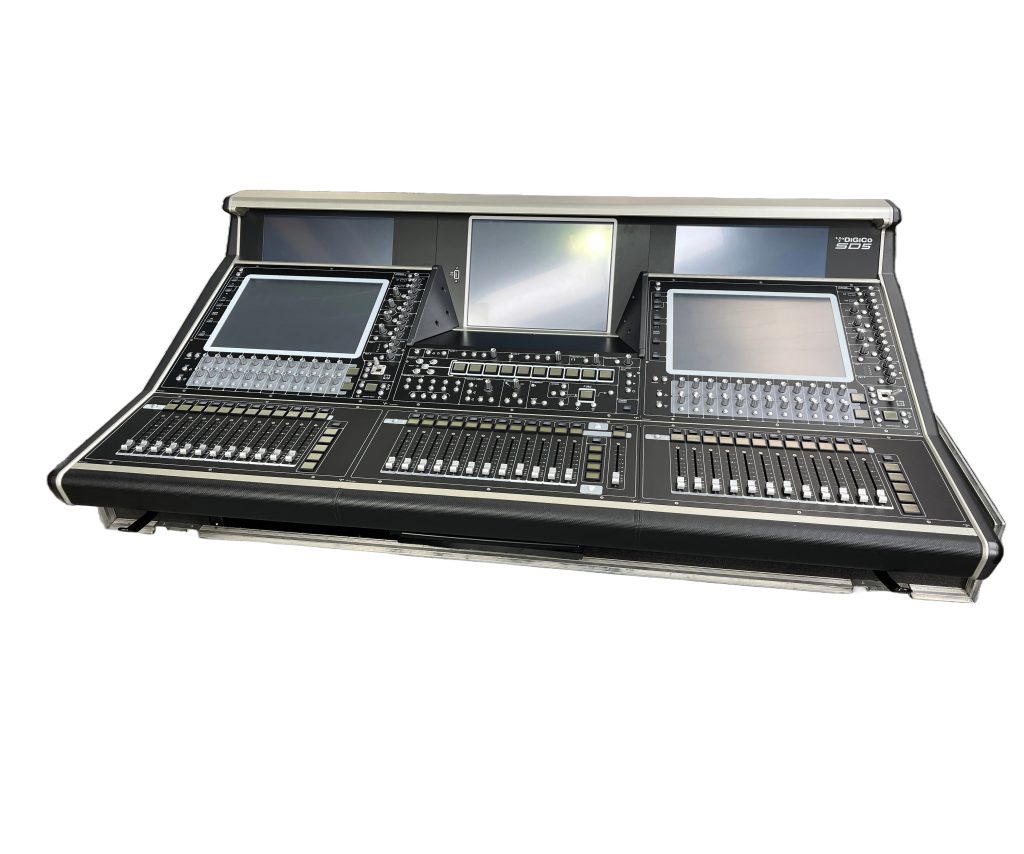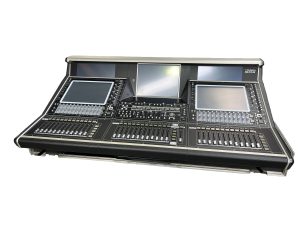A total of 37 faders are laid out in three easy-to-operate banks of 12 with one master fader plus three 15-inch full colour TFT touchscreens for immediate access to functions and multi-user applications. Two Interactive Dynamic Metering (IDM) displays offer the same at-a-glance operation as the SD7, while the centrally located master screen is incorporated into the meter-bridge, so the engineer’s attention remains where it belongs – on the artist.
Under The Hood
With up to 253 processing channels at 48kHz/96kHz, the SD5 is reassuringly powerful. Standard channel processing across inputs and outputs includes Channel Delay, Single and Multi-Channel Presets, Hi- and Lo-pass filters @ 24dB/octave, four-band parametric EQ (eight on the outputs) with band curve selection, Dual insert points, and DiGiCo’s renowned DYN 1 (Compressor, De-esser or Multiband Compressor) and DYN 2 (Gate, Compressor or Ducker).
In addition, 253 Dynamic EQ processors are available on any input or output channel, delivering dynamic processing over the four standard parametric bands, plus 253 Multiband Compressors and 253 DiGiTuBes. All channels deliver the same pure signal path and feature set, so no matter how you set up your console, you never lose any resources. Within the master section are 32 gangable 32 band graphic EQs, 32 stereo effects (selectable from a palette of 33), and 36 control groups (VCAs). Using snapshots, engineers can switch between complete configurations at a touch.
In addition, the SD5’s 128 configurable busses are all assignable as mono/stereo groups or auxiliary busses, while even more configurability comes courtesy of a 24 x 24 output matrix, dual solo busses, and an LR/LCR/5.1 Master Buss. Unlike all other digital console manufacturers, you don’t lose Aux or Group Busses when using the Matrix as they are in addition, including the Master buss.
I/O
The rear of the SD5 houses a wealth of I/O, including eight mic inputs, eight line outputs, eight mono AES I/O, four redundant MADI ports, and one Optocore loop. This equates to an incredible 1,264 I/O connections on a single optic loop with just one work surface.







